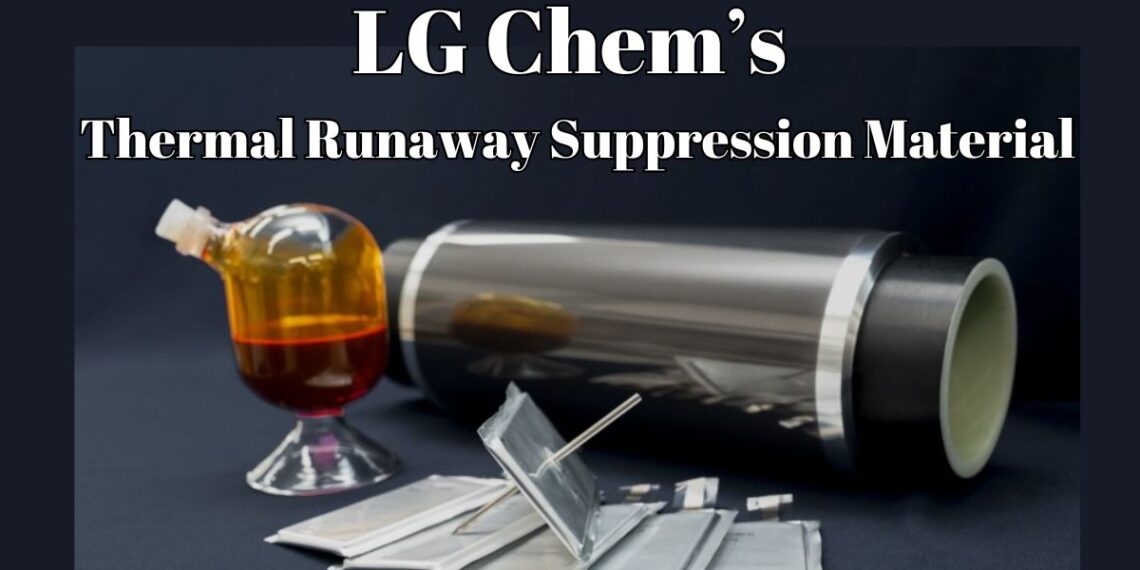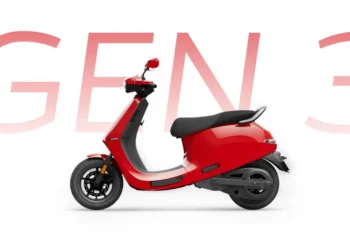In a significant advancement for battery safety, LG Chem has unveiled a new thermal runaway suppression material designed to prevent overheating and potential fires in electric vehicle batteries. This innovative technology acts as a barrier, blocking electrical flow during the initial stages of overheating, and represents a critical step towards enhancing consumer confidence in electric vehicle safety.
Table of Contents
What is Thermal Runaway?
Thermal runaway is a hazardous condition that occurs in batteries when internal components, specifically the cathode and anode, unintentionally come into direct contact. This can lead to short circuits and rapid temperature increases, often exceeding 1,000°C, resulting in fires. The development of effective thermal runaway suppression materials is crucial for ensuring the safety of electric vehicles.
Key Features of the New Material

- Temperature-Responsive: The newly developed material, termed Safety Reinforced Layer (SRL), is responsive to temperature changes, acting as a fuse that blocks the current flow when overheating is detected.
- Ultra-Thin Design: Measuring just 1 micrometer in thickness—about 1/100th the diameter of a human hair—this thermal runaway suppression material can be easily integrated within existing battery designs.
- High Resistance Change: The SRL experiences a dramatic increase in electrical resistance (by 5,000 ohms per °C) when temperatures rise between 90°C and 130°C, effectively reducing current flow and preventing fires.
Collaborative Development
The research team at LG Chem, in collaboration with Professor Lee Minah’s group from the Department of Battery Science at POSTECH, conducted extensive testing and verification of this thermal runaway suppression material. Their findings were published in the prestigious journal Nature Communications, highlighting the material’s potential for mass production and immediate application.
Research Paper Details
- Title: Thermal Runaway Prevention through Scalable Fabrication of Safety Reinforced Layer in Practical Li-ion Batteries
- Publication Date: September 2023
Testing and Results
Initial safety tests showcased promising results. Batteries equipped with the thermal runaway suppression material demonstrated superior performance during impact and penetration tests:
| Test Type | Regular Batteries | Batteries with SRL |
|---|---|---|
| Impact Test | All caught fire | 70% did not ignite |
| Penetration Test | 16% did not ignite | 100% did not ignite |
These results indicate the material’s effectiveness in preventing full-blown thermal runaway incidents, significantly enhancing the safety profile of electric vehicle batteries.
Summary of Tests
- In impact tests involving a weight drop, 70% of batteries with the SRL remained unaffected, while all standard batteries caught fire.
- In penetration tests, none of the batteries with the SRL ignited, while only a fraction of regular batteries managed to avoid fires.
Future Steps and Applications
LG Chem is committed to further safety verification of the thermal runaway suppression material for large-capacity electric vehicle batteries. The company plans to intensify testing efforts through the next year, ensuring that the technology meets stringent safety standards before widespread implementation.
Potential Benefits of the New Technology
- Increased Consumer Confidence: With enhanced safety measures, consumers can feel more secure using electric vehicles.
- Improved Battery Performance: By addressing thermal runaway risks, this material can contribute to the overall longevity and reliability of batteries.
- Competitive Edge: LG Chem aims to strengthen its position in the battery market by integrating this innovative technology into mass production.
Lee Jong-gu, CTO of LG Chem, emphasized the significance of this breakthrough, stating, “This is a tangible research achievement that can be applied to mass production in a short period. We will enhance safety technology to ensure customers can use electric vehicles with confidence and contribute to strengthening our competitiveness in the battery market.” This commitment to innovation underlines LG Chem’s dedication to advancing battery safety standards.
Conclusion
LG Chem’s development of the thermal runaway suppression material marks a pivotal moment in battery safety technology. This innovative approach not only addresses critical safety concerns associated with electric vehicle batteries but also aligns with the industry’s broader goal of fostering confidence in electric mobility. As LG Chem continues to refine and test this technology, the future looks promising for safer electric vehicles and a more sustainable automotive industry.
By prioritizing battery safety through innovative solutions like the thermal runaway suppression material, LG Chem is setting a new standard in the electric vehicle market, ensuring safer travel for all.
To know about BPCL and IONAGE Partnership, to Expand EV Charging Network in India, Click here.
FAQs
1. What is thermal runaway?
Thermal runaway is a phenomenon where a battery experiences a rapid increase in temperature, leading to potential fires or explosions.
2. How does the thermal runaway suppression material work?
The material increases its electrical resistance in response to heat, effectively blocking current flow during overheating.
3. What are the testing results for this material?
Batteries with the suppression material showed 100% fire prevention in penetration tests and 70% fire prevention in impact tests.
4. When will this technology be available for mass production?
LG Chem plans to apply this technology to mass production shortly, following further safety testing.







